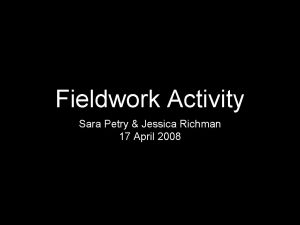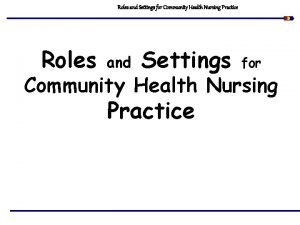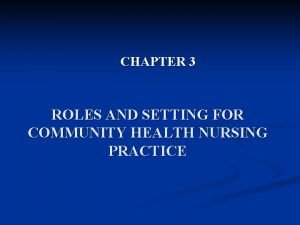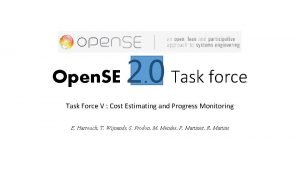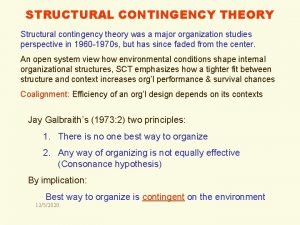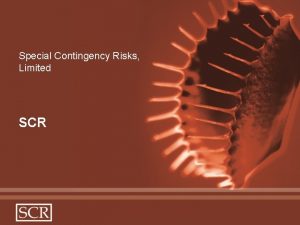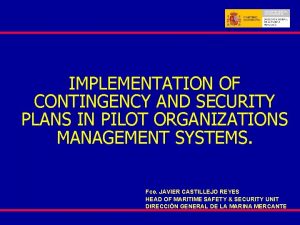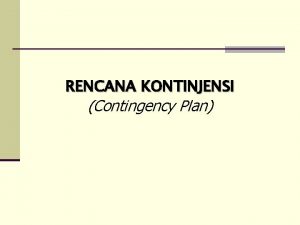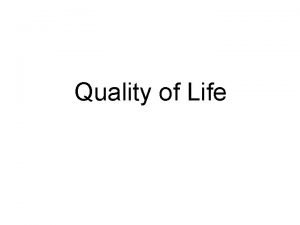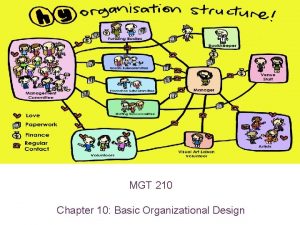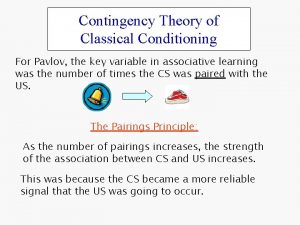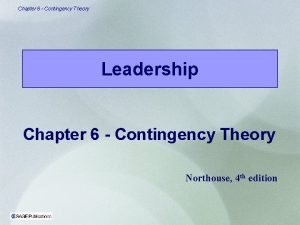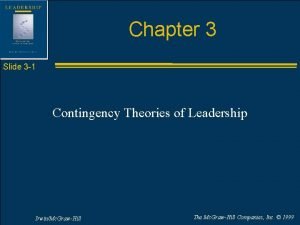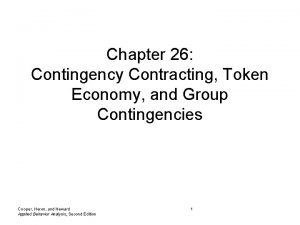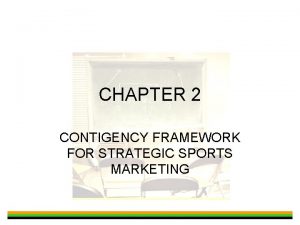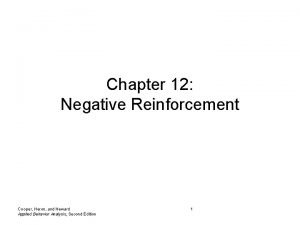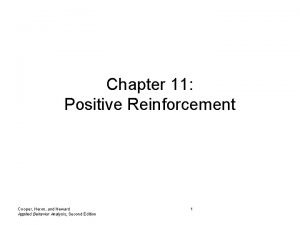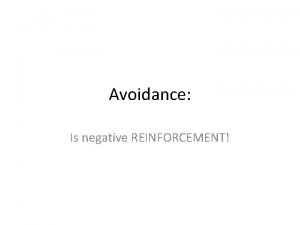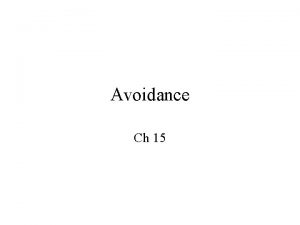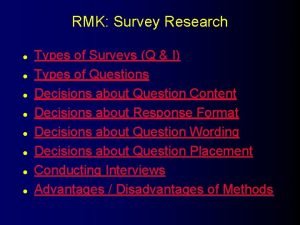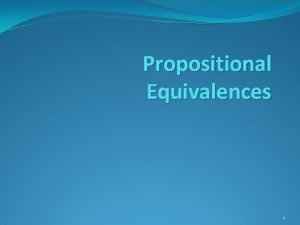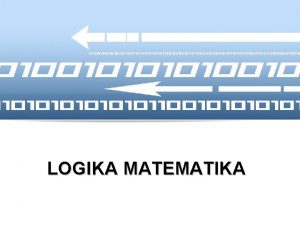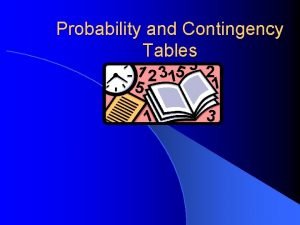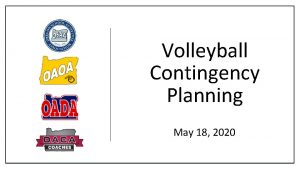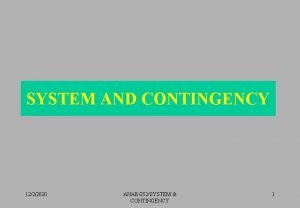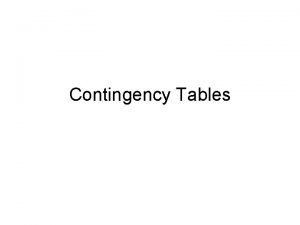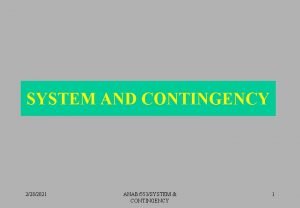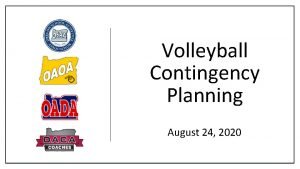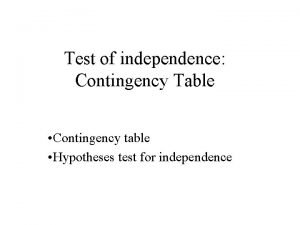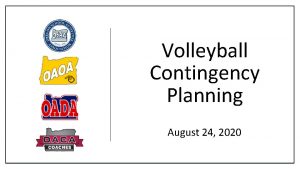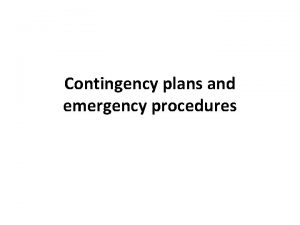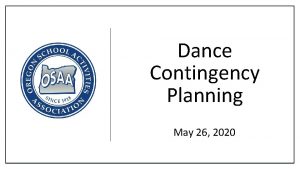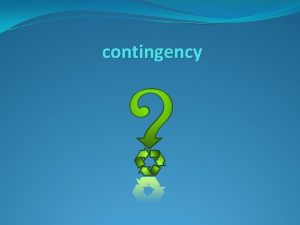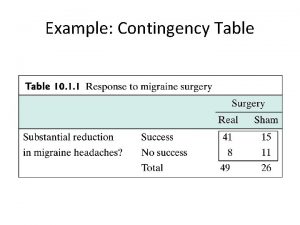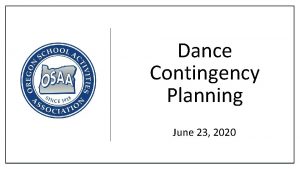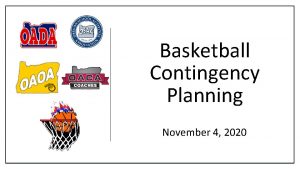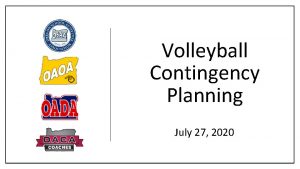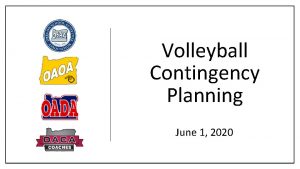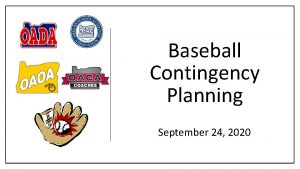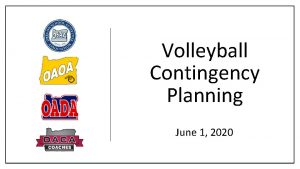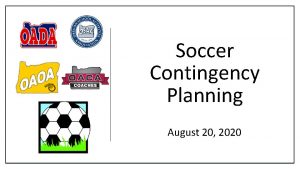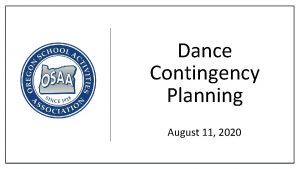LowCost Contingency Management in Community Settings Nancy Petry






























- Slides: 30

Low-Cost Contingency Management in Community Settings Nancy Petry, Ph. D. University of Connecticut Health Center Farmington, CT Supported by NIH grants R 01 -DA 13444, RO 1 -DA 016855, RO 1 -DA 14618, R 29 -DA 12056, P 50 -DA 09241 and P 50 -AA 03510

Contingency management: 1. ) Frequently monitor target behavior. 2. ) Provide tangible reinforcement when target behavior occurs. 3. ) Remove reinforcement when target behavior does not occur.

Voucher studies $10

Treatment of Cocaine Dependence Higgins et al. , 1994 Contingency Management Ø Community Reinforcement Approach Therapy Ø Urine testing 2 x/week Ø Vouchers $10 Up to $1000 available Standard treatment Ø Community Reinforcement Approach Therapy Ø Urine testing 2 x/week Ø No vouchers

Treatment of Cocaine Dependence Retained throughout Trial Higgins et al. , 1994

Voucher studies 1. 2. Opioids (Stitzer et al various, Bickel et al. , 1997) Cocaine (Higgins et al. , 1991, 1993, 1994; Silverman et al. , 1996; Shaner et al. , 1997) 3. 4. 5. 6. Benzodiazepines (Stitzer et al. , 1992) Marijuana (Budney et al. , 1991, 2000) Alcohol (Bigelow et al. , 1975; Miller, 1975) Nicotine (Crowley et al. , 1991; Roll et al. , 1996; Shoptaw et al. , 1996)

Addressing some of the practical concerns 1. Cost 2. Generalization and Acceptability

Intermittent schedule of reinforcement Implementation into standard clinic settings

Standard VA clinic setting Subjects: 42 alcohol-dependent outpatients Standard treatment: ØIntensive outpatient day program 5 hrs/day, 5 days/week, weeks 1 -4 ØAftercare 1 -3 groups/week, weeks 4 -8 Treatment consisted of group sessions: 12 step, relapse prevention, voc rehab, AIDS, coping skills

Standard treatment group Received standard group treatment and BAC monitoring (daily during intensive, weekly during aftercare). Additional 15 min of education on alcohol abuse weekly

Contingent group Standard group treatment and BAC monitoring Reinforce alcohol abstinence: Ø Ø One draw for each negative BAC. Five bonus draws for a week of consecutive abstinence. 128 draws possible

Half the cards are winning Ø 1/2 chance of winning a small $1 prize Ø 1/16 chance of winning a medium $20 prize Ø 1/250 chance of winning a jumbo $100 prize

Retention Petry et al. , 2000

Time until first heavy drinking episode p<. 05 Petry et al. , 2000

Percent positive for any illicit drug Petry et al. , 2000

Summary Ø Ø Ø This variable ratio schedule of reinforcement significantly increased retention and reduced alcohol use. On average, subjects earned $200 worth of prizes. Local retailers and stores were willing to donate prizes.

Does this intermittent reinforcement system work as well as the voucher system?

Study design ä ä Cocaine-dependent outpatients initiating intensive outpatient treatment. Randomly assigned to: ä ä ä Standard treatment plus voucher CM Standard treatment plus prize CM

Vouchers vs. prizes Retention p=. 08 p<. 01

Mean weeks of continuous cocaine abstinence p<. 01 p<. 05

How low can we go?

Treatment groups Cocaine-dependent patients entering intensive day program randomly assigned to: 1. ) Standard treatment 2. ) Standard treatment plus $80 CM ($0. 33, $5, and $100 prizes) 3. ) Standard treatment plus $240 CM ($1, $20, and $100 prizes)

Mean weeks of continuous cocaine abstinence Petry et al. 2004

Can it work in group settings?

Methadone maintenance clinic Group attendance Cocaine abstinence p<. 01 Petry et al. , JCCP, in press

Attendance at groups at HIV center Baseline Reinforcers on Tues Reinforcers on Thurs Lower reinforcers on Thurs Baseline Petry, Martin, & Finocche, 2001

Community-based therapists providing the incentives for group attendance Mean days attended treatment Mean weeks of continuous cocaine and opioid abstinence

Summary Ø Ø This lower-cost CM system is effective in retaining patients in treatment. It reduces substance use. Larger magnitude prizes seem more effective than smaller magnitude prizes, but prizes work at least as well as vouchers. This CM system can be implemented into group treatment format.

Additional studies should address: ä ä ä Ways to further reduce costs without compromising efficacy. Patient subgroups who may require higher or lower incentives. What behaviors to target. Optimal durations of treatment. Long-term efficacy. Methods for training therapists to administer the treatments.

Acknowledgements ä ä ä ä Alcohol and Drug Recovery Centers, Inc. (Hartford, CT) Baystate Medical Center (Springfield, MA) Community Substance Abuse Centers, Inc. (Hartford, CT) The Living Center (Hartford, CT) Morris Foundation (Waterbury, CT) St. Francis Behavioral Health (Hartford, CT) VA Connecticut (Newington, CT) Sheila Alessi, Ph. D. , Mark Austin, Ellen Cielieski, Marilyn Lewis, Ph. D. , Bonnie Martin, Steve Mc. Kinnon, Sean Sierra, Michelle Tardiff, Jackie Tedford, M. S. W. , and Mary Wieners
 Sara petry
Sara petry Sustainable development
Sustainable development Tim petry
Tim petry Role of the community health nursing
Role of the community health nursing Community settings main roles
Community settings main roles Community settings main roles
Community settings main roles Contingency reserve vs management reserve
Contingency reserve vs management reserve Contingency
Contingency Two by two table
Two by two table Scr limited
Scr limited Contingency transportadora
Contingency transportadora Contoh contingency plan
Contoh contingency plan Intentional communication
Intentional communication Functional departmentalization groups jobs by
Functional departmentalization groups jobs by Negative contingency
Negative contingency Contingency plan template
Contingency plan template Lpc scale contingency theory
Lpc scale contingency theory Contingency theory of leadership
Contingency theory of leadership Group contingency definition
Group contingency definition Contingency framework for strategic sports marketing
Contingency framework for strategic sports marketing Eo for negative reinforcement
Eo for negative reinforcement Three term contingency
Three term contingency Avoidance contingency aba
Avoidance contingency aba In an avoidance contingency
In an avoidance contingency Chapter 16 accounting for income taxes
Chapter 16 accounting for income taxes Chapter 13 current liabilities and contingencies
Chapter 13 current liabilities and contingencies Contingency questions/cascade format
Contingency questions/cascade format Tautologies contradictions and contingencies
Tautologies contradictions and contingencies Kontingensi logika matematika
Kontingensi logika matematika Contingency theory strengths and weaknesses
Contingency theory strengths and weaknesses Contingency contracting definition
Contingency contracting definition
